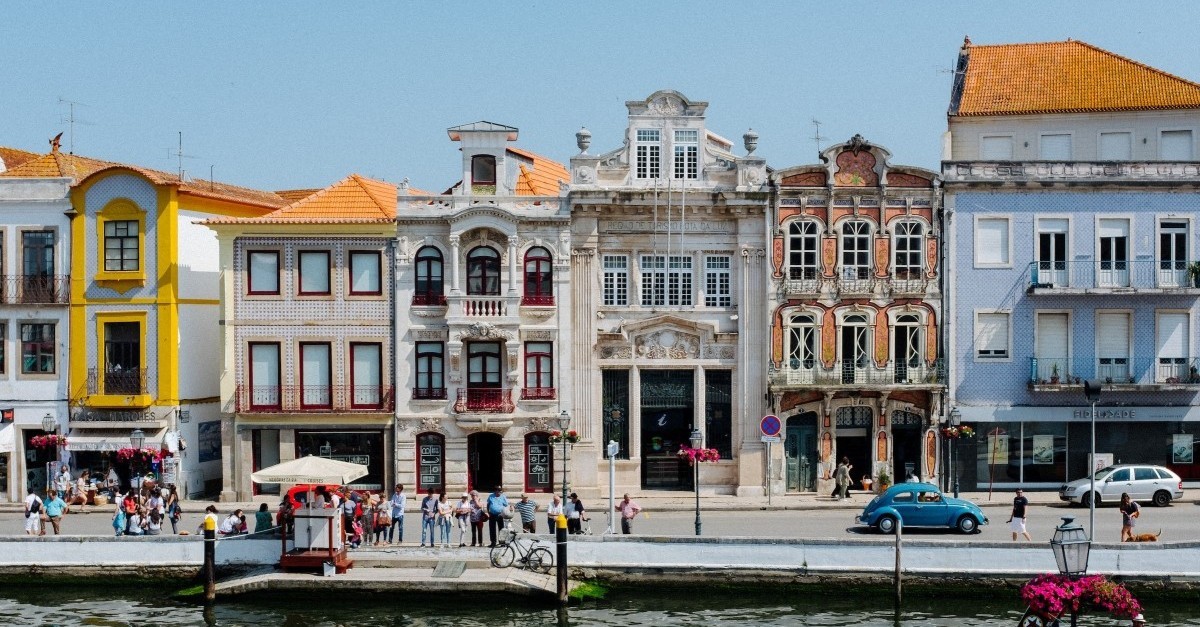
Weekend breaks in Portugal offer a diverse range of experiences, from exploring historic cities to relaxing on beautiful beaches and indulging in delicious cuisine. Whether you're wandering along the charming streets of Lisbon, enjoying a glass of port wine in Porto, or lounging on the sun-kissed beaches of the Algarve, Portugal caters to the preferences of every traveller. Due to its compact size, the country is perfect for weekend escapes, enabling visitors to explore its quaint villages, significant historical sites, and delectable cuisine in a brief time frame. Today we're exploring some of the best city breaks in Portugal, beyond Lisbon and Porto.
A weekend in Portugal: where to go and what to see in 2025
Enjoy a weekend escape to Portugal, where rich culture meets breathtaking landscapes. Savour delicious local cuisine, unwind in a warm, welcoming atmosphere, and explore a mix of tradition and modern charm. Whether you seek relaxation, adventure, or a taste of history, Portugal offers the perfect balance for a short getaway. Its sunny weather and vibrant lifestyle make it an ideal destination to recharge and experience something new – these are our top picks of where to go and what to see in 2025.
Guimarães
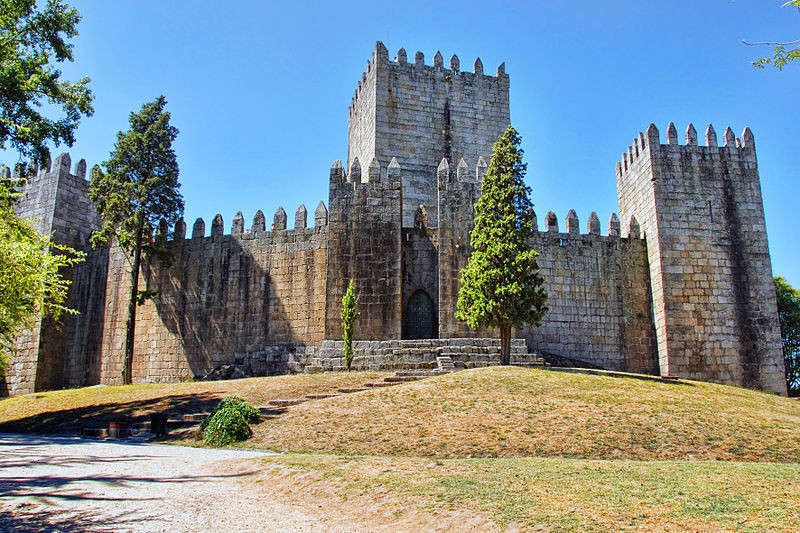
Guimarães is the location that witnessed the birth of the Kingdom of Portugal and is a truly beautiful city that everyone should visit at least once. Discover the history and symbolism on display in this charming city, and find out why it is an unmissable visit when you’re in Portugal.
The main point of interest in Guimarães is the impressive castle, the first such example in Portugal and the place where D. Afonso Henriques' resistance against the forces of Castile and Leon began. However, this is not all, as Guimarães offers much more, notably a tranquil environment that is perfect for those who want to escape the stress of daily life and get to know a piece of Portuguese history by discovering the city where it all began.
What to visit in Guimarães:
- Guimarães Castle: the first castle in Portugal was fully restored and declared a National Monument in the 20th century.
- Paço dos Duques de Bragança: this palace in the city is now a museum that houses a collection of art from the 17th and 18th centuries and, on the second floor, is the official residence of the President of the Republic of Portugal whenever he travels to the north of the country.
- Praça de Santiago: this is a square full of shops and esplanades, ideal for mixing with the locals and getting a glimpse of how the people of Guimarães live on a daily basis.
- Citânia de Briteiros: visit this set of impressive ruins from the Iron Age. It is one of the most important protohistoric settlements on the Iberian Peninsula due to its size, urban layout and architecture.
What to eat in Guimarães:
- Roast kid or veal: if you're a meat lover, then you certainly can't miss out on this hearty meal, one of the most typical Portuguese dishes.
- Cod with baked potatoes: this is the obligatory bacalhau cod dish that you can find everywhere in the country and is delicious all year round.
- Toucinho do céu: this is a delightful dessert made by monks in a convent. It is like a cake made with sugar, ground almonds, sometimes jam and, finally, a large quantity of egg yolks.
- Tortas de Guimarães: these shell-shaped sweets, also made by monks or nuns, are also one of the most typical sweet treats in Guimarães. They are made using puff pastry and are filled with jam, eggs and almonds.
Find your holiday rental in Guimarães
Find property for sale in Guimarães
Aveiro
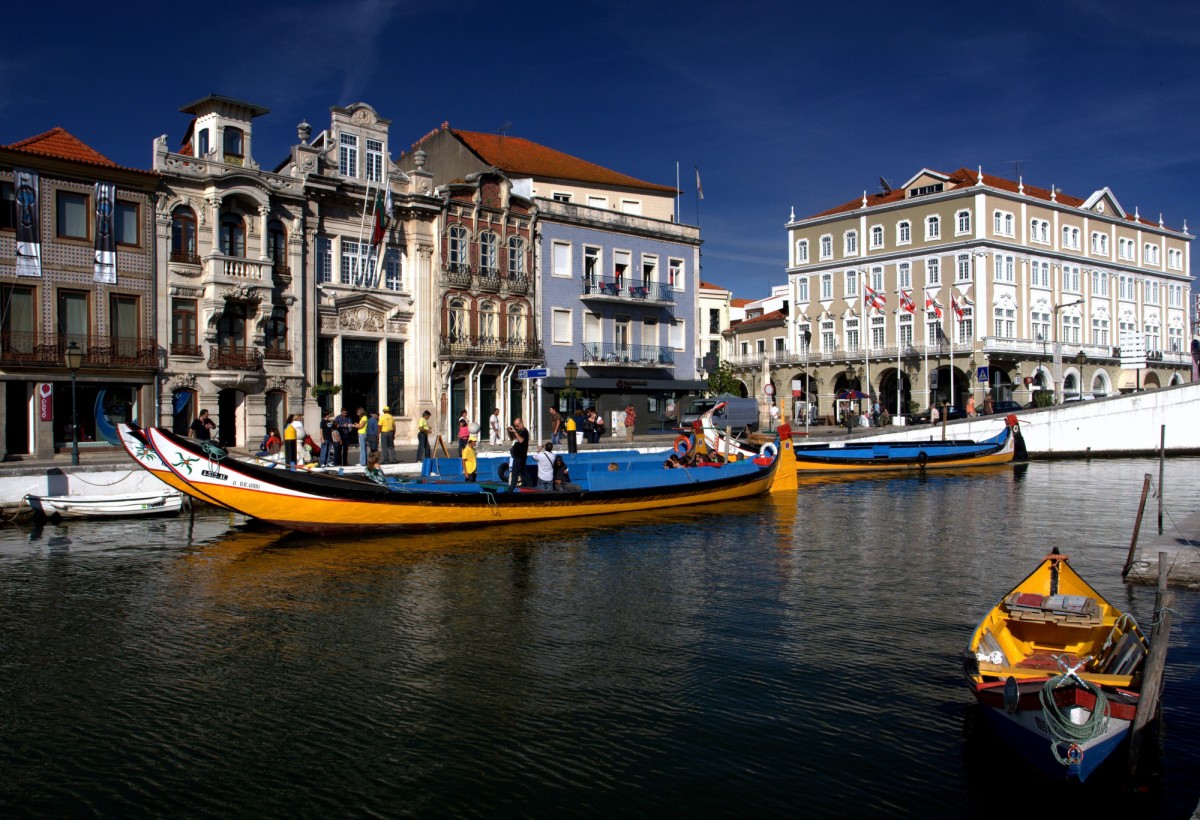
Often referred to as the "Venice of Portugal", Aveiro is well worth visiting and has a unique charm that makes it one of the most interesting cities in Portugal. The "Ria" is one of the highlights and holds much of the charm of this city. Our suggestion on the best way to explore Aveiro is on one of the typical boats called moliceiros, which are characterised by their colourful decoration and humorous messages that are often written on the side.
We also recommend a visit to the beautiful Costa Nova beach, even during the autumn and winter months, an extensive beach that is considered one of the best Portuguese beaches for water sports. Another thing that makes this beach so special are the palheiros, pretty little houses or huts that are painted with joyful, colourful stripes; a must visit spot for keen photographers.
What to visit in Aveiro:
- Sail the canals of the city in a moliceiro: this is an essential part of your visit to Aveiro. These boats, formerly used to transport the moliço (seaweed from the river), are the city's trademark. Discover the city and learn about it with a guided tour by the boat handler.
- Praça das Arcadas: this square surrounded by arches is one of the most beautiful in the city, and is located in the historical part of Aveiro.
- Take a walk along the São Roque Canal and visit the salt warehouse, which is still an active working factory to this day.
- Ponte dos Namorados: the Bridge of Lovers is the most romantic bridge in the city, decorated with colourful ribbons and bows left by couples who have visited from all over the world.
What to eat in Aveiro:
- Ovos moles: these typical sweets from Aveiro are made with molded wafers in the form of clams, fish and shells and are often covered with a sweet sugary syrup.
- Pão de ló de Ovar: this is a moist sponge cake made with eggs, sugar and wheat flour but without yeast or syrup.
- Caldeirada de eguias: this local dish perhaps isn't for everyone, but we recommend you give it a go. It's a kind of eel stew, which is a real delicacy that tastes better than it sounds.
Find your holiday rental in Aveiro
Find property for sale in Aveiro
Óbidos
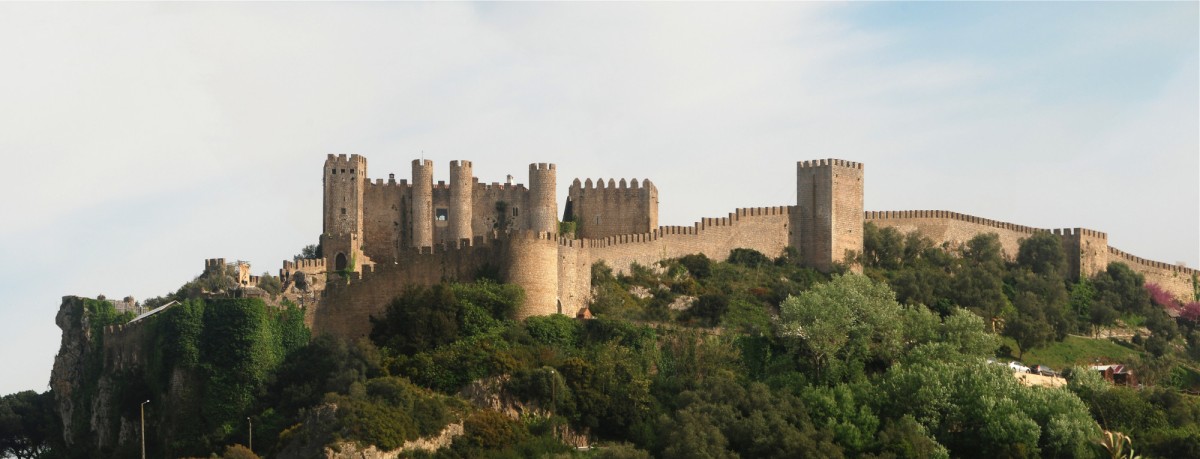
In the Portuguese district of Leiria you can find the excellent city of Óbidos, which has a wonderful historical centre surrounded by medieval walls with classic battlements. The village is a charming visit and is made up of a maze of cobbled streets and quaint whitewashed houses, decorated with flowers and touches of yellow and blue paint that make this area truly unforgettable.
This charming village in Portugal is a huge tourist attraction for all fans of history who come to visit the impressive castle, attend the wide range cultural events and activities on offer, or just spend a few days in one of the most magical places in Portugal. Lose yourself in its winding streets, walk on top of the ancient city walls and let yourself be swept up in the history of this open-air museum.
What to do in Óbidos:
- Castelo de Óbidos: the impressive castle in the city was built by the Arabs and later offered as the dowry of several queens, such as Queen Santa Isabel and Queen Leonor.
- The Igreja Matriz de Santa Maria, the Igreja da Misericórdia and the Igreja de São Pedro: each of these churches has its own charm, but together, they are the true sanctuaries of Óbidos and each one a work of art in its own right.
- Porta da Vila: the main entrance to the town of Óbidos consists of a double gate and has a stunning interior which is covered with gorgeous 18th century tiles.
- Museu Municipal de Óbidos: the museum of Óbidos was inaugurated in 1970 and has several works of important religious character.
What to eat in Óbidos:
- Ginjinha no vidro: dark red in colour, the ginja is a liqueur with two distinct varieties: the straight-up liqueur and the liqueur with fruit inside, like sour cherry, and sometimes flavoured with vanilla or a stick of cinnamon. In Óbidos, people usually drink it from a small glass made of chocolate that can be eaten at the end!
- Chocolate: every year, the town of Óbidos hosts the International Chocolate Festival. As well as seeing the marvellous chocolate sculptures they make, you can also taste some of the best chocolate sweets in the world.
- Fresh bread: in the village, you can find some of the best traditionally baked breads in the whole country, baked in the old Portuguese way in wood-burning ovens.
Find your holiday rental in Óbidos
Find property for sale in Óbidos
Évora
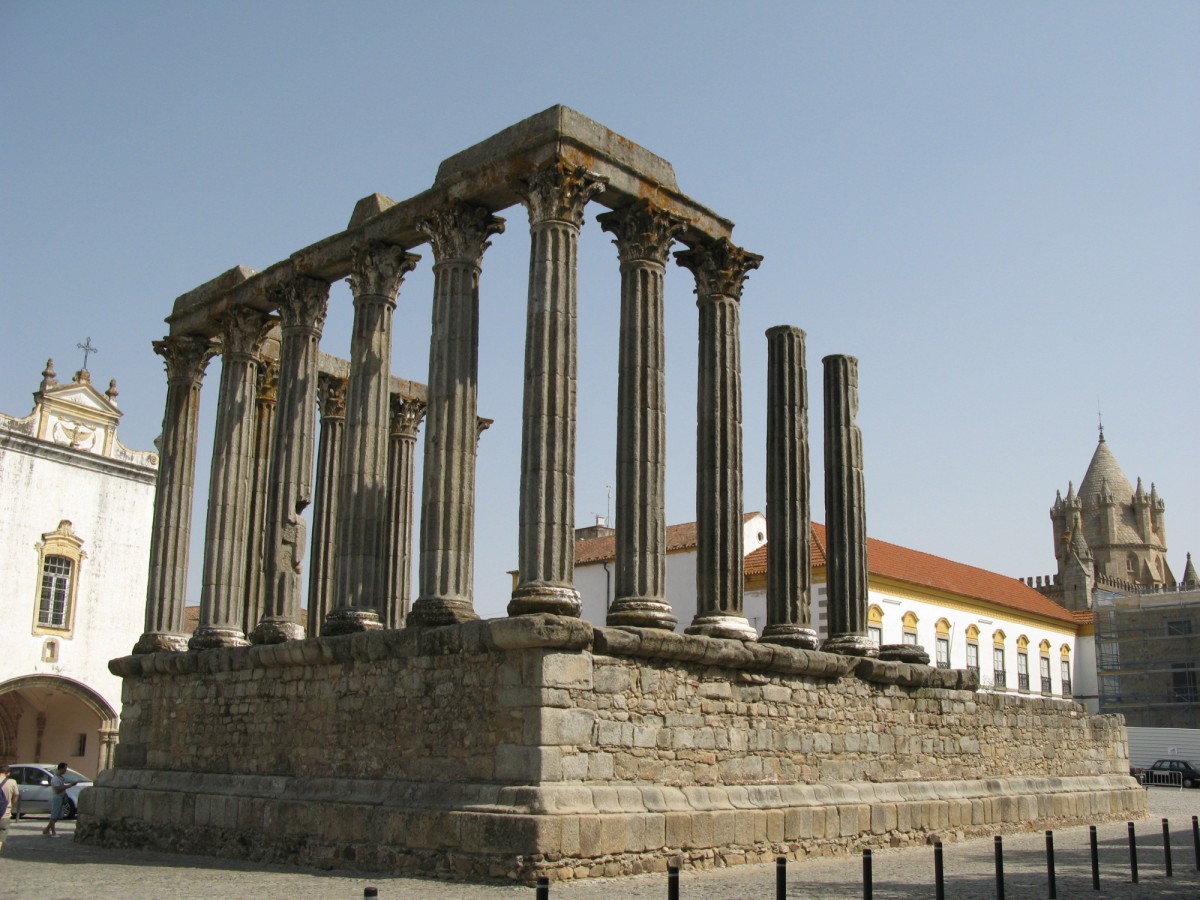
Évora is one of the three most important cities in the Alentejo region, and the whole city is like a museum because of its historical roots that date back to Roman times. The impressive architecture, the white houses, the typical Portuguese tiles, and the charming balconies are just some of the things that make this city so special. In addtion, UNESCO highlights the city wall, the aqueduct and the cathedral as the places of greatest cultural interest in Évora.
If you go to Évora, then you cannot leave without devouring some of the delicious Alentejo food on offer. We especially recommend a good lunch in one of the traditional Portuguese restaurants of the city, with some Alentejo cheese and a good local wine.
Things to do in Évora:
- The Capela dos Ossos (The Bone Chapel): located in the Church of San Francisco and built by Franciscan monks, this whole chapel has been decorated with real bones. Here you will find the creepy inscription “Nós ossos que aqui estamos pelos vossos esperamos”, which means "We bones that are here wait for you".
- The Roman Temple of Évora: incorrectly called the Temple of Diana, this impressive monument is an integral part of the city's old town, which has been classified as a UNESCO World Heritage Site. The Roman temple is also recognised as a National Monument by the DGPC.
- The Cromlech de Almendres: this megalithic monument consists of 95 stone monoliths, the most important of its kind on the Iberian Peninsula and one of the most important in all of Europe. It is impressive not only for its imposing size, but also for its incredible state of conservation after several millennia.
- The Cathedral of Évora or Basilica Sé de Nossa Senhora da Assunção: this monument is particularly marked by the transition from the Romanesque to the Gothic style and has three majestic naves that you can explore.
What to eat in Évora:
- Açorda à Alentejana: this is a unique kind of soup, of which various versions exist in different places in the country. Prepared with garlic, salt, olive oil, water and sliced bread, it can also contain coriander, mint and fish depending on where you try it.
- Queijo de Évora: this is a hard or semi-hard matured cheese with a slightly yellowish, colour that is small and circular.
- Torrão Real de Évora or Torrão de Ovos: if you've a sweet tooth, you can't miss this irresistible sweet treat prepared with egg yolks, sugar and almonds.
- Queijadas de Évora: another typical convent sweet treat, these queijadas have a crunchy dough and a filling of eggs and fresh cheese.
Find your holiday rental in Évora
Find property for sale in Évora
Silves
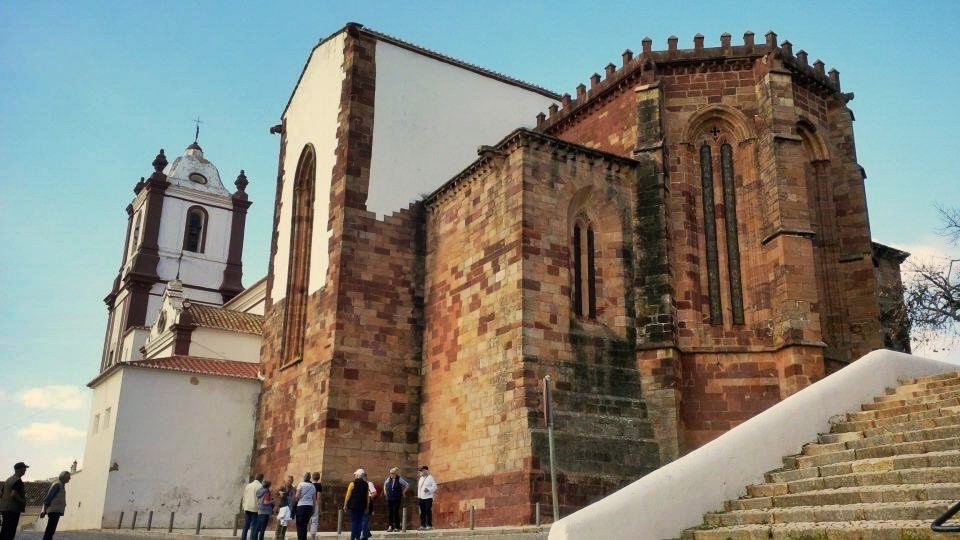
Unlike other coastal areas of the Algarve, Silves' charm is found in its tranquillity, while at the same time offering several activities of interest to the region's tourists. Considered the best city in the northern region of the Algarve, the former capital of the Algarve offers a fantastic opportunity to discover authentic Portugal.
Although the main areas of interest in Silves can be visited in less than a day, we recommend spending a night or two in the city to really soak in the calm and unique atmosphere.
The main points of interest in Silves are the Cathedral, the Municipal Museum of Archaeology of Silves, the Roman bridge and, of course, its biggest attraction, Silves Castle, made of a red brick that dominates the local landscape.
What to do in Silves:
- Cathedral of Silves: built in the fifteenth century, the ancient Catedral de Silves has a Gothic style combined with elements from other eras, the result of its changes over the centuries.
- Museu Municipal de Arqueologia de Silves: inaugurated in 1990, the Archaeology Museum allows you to take a trip back in time with artefacts dating back as far as the 13th century.
- The Roman bridge: an impressive bridge over the river Arade located in the city of Silves which is said to have been originally built in Roman times and rebuilt in the 15th century.
- Castelo de Silves: at the mouth of the river Arade is the largest castle in the Algarve region, being considered the most beautiful examples of Islamic military architecture in Portugal.
What to eat in Silves:
- Papas del milho: this is a traditional dish made of corn that was made to give strength to those who had to work in the fields nearby.
- Galinha de cabidela: not for the faint-hearted, this is a chicken stew with the animal's vinegary blood added during cooking. In southern Portugal, it is usually served with sautéed cabbage and is actually surprisingly tasty.
- Tarta de alfarroba: this is a delicious, moist and irresistible pie prepared with carob flour.
- Morgado de Figo: for those after something sweet, this is a cake made using figs and almonds, the most popular ingredients in traditional baked recipes from the Algarve. It also has chocolate, cinnamon, fennel and lemon and is covered with a sugar syrup.
Find your holiday rental in Silves
Find property for sale in Silves
Sintra
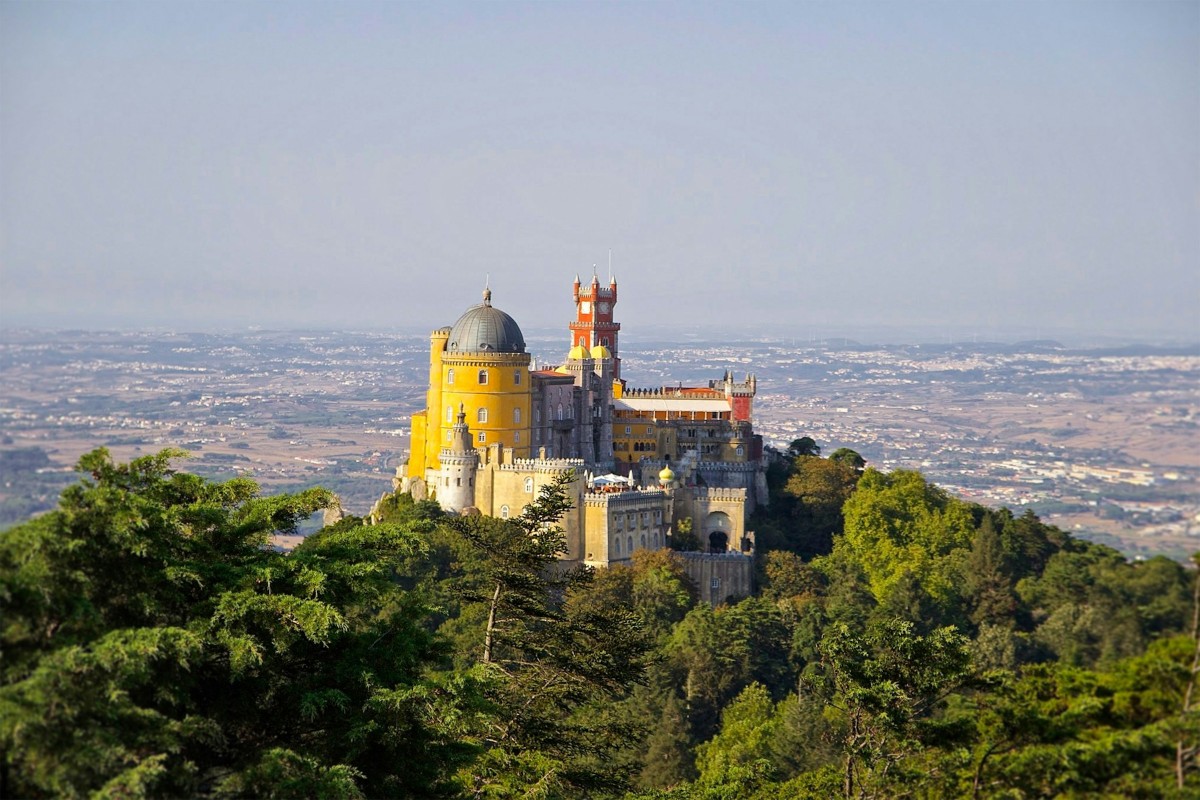
Just a short drive from Lisbon, Sintra is a picturesque town nestled amid lush hills and forests. It's known for its fairytale-like palaces, including the colourful Pena Palace and the Moorish Castle, both of which offer stunning panoramic views. Wander through the enchanting gardens of Quinta da Regaleira and explore the mysterious initiation well. Sintra is also home to beautiful beaches such as Praia da Adraga and Praia Grande.
What to do in Sintra:
- Explore the historic center: Take a leisurely stroll through Sintra's historic centre, filled with charming cobblestone streets, colourful buildings, and artisan shops selling local crafts and souvenirs.
- Visit Pena Palace: Marvel at the colourful and whimsical Pena Palace, a UNESCO World Heritage Site. Explore its eclectic architecture, lush gardens, and stunning panoramic views of the surrounding landscape.
- Discover Moorish Castle: Climb up to the Moorish Castle perched on a hilltop for breathtaking views of Sintra and its surroundings. Explore the ancient walls and towers of this medieval fortress.
What to eat in Sintra:
- Travesseiros: These almond-filled pastries are a Sintra specialty. They consist of flaky puff pastry filled with a sweet almond and egg cream filling, often dusted with powdered sugar.
- Queijadas de Sintra: Another famous pastry from the region, queijadas are small cheese tarts made with a creamy mixture of fresh cheese, sugar, eggs, and cinnamon, baked in a crispy pastry shell.
- Local Wines: Pair your meal with a glass of Portuguese wine, such as Vinho Verde or a robust red from the Douro Valley. Alternatively, try a glass of ginjinha, a traditional Portuguese cherry liqueur often served as a digestif.
Find your holiday rental in Sintra
Find property for sale in Sintra
Is 3 days enough in Portugal?
Three days in Portugal can be enough to experience a taste of its charm, especially if you focus on one city or region. For instance, you could explore a vibrant city, enjoy local cuisine, and soak up the culture. However, Portugal has so much to offer that a longer stay allows for deeper exploration, such as visiting multiple regions, discovering hidden gems, or fully unwinding. For a weekend break, three days is ideal for a memorable introduction!
Tips for going on a weekend break in Portugal
Make the most of your weekend break in Portugal by planning ahead. Choose a single city or region to explore, as travelling between destinations can eat into your time. Pack light for easy mobility, and wear comfortable shoes for walking, as many areas feature cobbled streets and hills. Book accommodation close to the main attractions to minimise travel time, and consider local guesthouses for an authentic experience.
Embrace the local culture by trying traditional dishes and visiting markets or small cafés. Portugal’s warm hospitality means you’ll feel welcome wherever you go. Time your visit to include local festivals or events, and prioritise must-see landmarks or activities. Leave some time for relaxation, as Portugal’s laid-back charm is best enjoyed at your own pace.